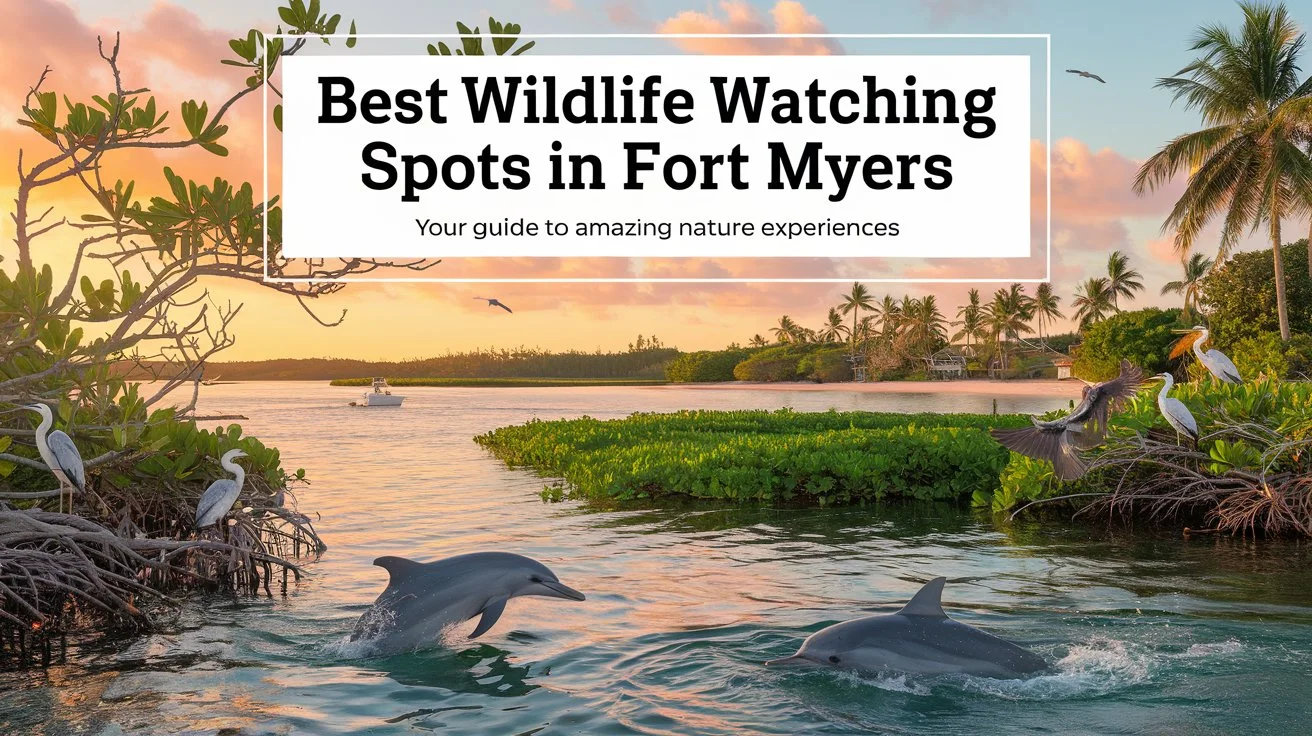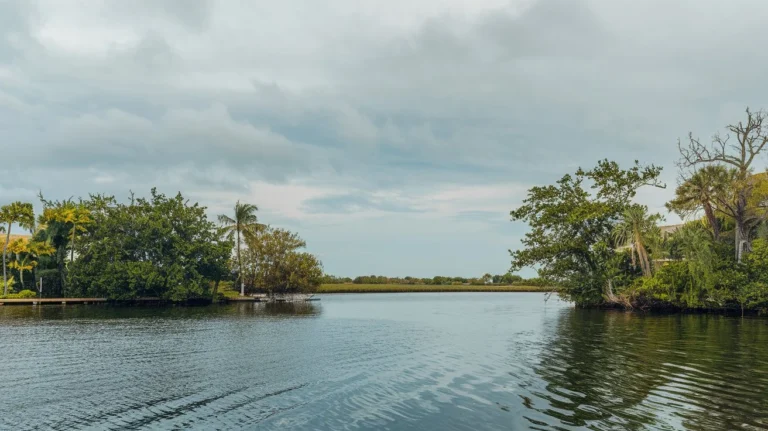Are you a nature enthusiast looking for the perfect destination to immerse yourself in the beauty of the natural world? Look no further than Fort Myers, Florida! This sun-drenched city on the Gulf Coast is a true paradise for wildlife lovers, offering a diverse array of ecosystems and a wide variety of species to observe and appreciate.
In this comprehensive guide, we’ll take you on a journey through the top wildlife watching spots in Fort Myers, share insider tips for a successful experience, and explore the unique conservation efforts that make this region a true gem for nature lovers. Whether you’re a seasoned birdwatcher, a marine life enthusiast, or simply someone who appreciates the tranquility of the great outdoors, Fort Myers has something special in store for you.
So, grab your binoculars, pack your sunscreen, and get ready to embark on an unforgettable adventure in one of Florida’s most wildlife-rich destinations. Let’s dive in and discover the wonders that await in Fort Myers!
Why Fort Myers is a Wildlife Watcher’s Paradise
Fort Myers is blessed with a variety of ecosystems, from wetlands and mangroves to coastal dunes and estuaries. This diversity supports a wide range of wildlife, making it an ideal destination for nature enthusiasts. Here, you can find everything from vibrant birdlife to playful dolphins and gentle manatees, all within a short drive from the city.
The region’s unique location along the Atlantic Flyway makes it a critical stopover for migrating birds, offering prime birdwatching opportunities. Additionally, the warm Gulf waters are home to a variety of marine species, making it a hotspot for spotting dolphins, sea turtles, and manatees.
Best Times of the Year for Wildlife Watching
Wildlife activity in Fort Myers varies with the seasons. The cooler months, from November to March, are particularly good for birdwatching as many species migrate to the area to escape the northern winters. This period is also the best time to see manatees, as they congregate in the warmer waters near power plants and natural springs.
Spring and early summer are excellent for viewing nesting birds and marine life. However, summer can be hot and humid, with afternoon thunderstorms, so early morning or late evening outings are recommended. Fall brings another wave of bird migration, making it another prime time for wildlife viewing.
Top Wildlife Watching Spots in Fort Myers
J.N. “Ding” Darling National Wildlife Refuge
Arguably the crown jewel of wildlife viewing in Fort Myers, the J.N. “Ding” Darling National Wildlife Refuge on Sanibel Island offers an extraordinary array of wildlife. This 6,400-acre refuge is renowned for its birdlife, including roseate spoonbills, herons, egrets, and pelicans. The refuge also offers sightings of alligators, bobcats, and numerous fish species. The Wildlife Drive and various walking trails provide ample opportunities for close encounters with nature.
Six Mile Cypress Slough Preserve
This 3,500-acre wetland is a haven for wildlife and a favorite among locals. The boardwalk trail meanders through a beautiful cypress swamp, offering glimpses of alligators, turtles, otters, and a wide variety of birds. The Slough is particularly peaceful early in the morning, making it a perfect spot for a quiet wildlife viewing experience.
Lovers Key State Park
Lovers Key State Park, once accessible only by boat, is now a popular spot for wildlife watching. The park’s tidal lagoons, mangroves, and beaches attract a variety of species, including West Indian manatees, dolphins, marsh rabbits, and a plethora of bird species. Its relatively secluded beaches also make it a good spot for watching shorebirds and sea turtles.
Manatee Park
Located along the Orange River, Manatee Park is a seasonal haven for these gentle giants. During the cooler months, manatees seek the warmer waters here, making it one of the best places in Fort Myers to see them up close. The park also features educational programs and viewing platforms that allow for safe and respectful observation of these endangered creatures.
Caloosahatchee Creeks Preserve
A bit off the beaten path, Caloosahatchee Creeks Preserve offers a more rustic and quiet wildlife experience. The preserve features walking trails that wind through upland and wetland habitats, providing opportunities to see gopher tortoises, armadillos, and various bird species. It’s also an excellent spot for nature photography, with several scenic vistas along the way.
Birdwatching in Fort Myers
Fort Myers is a birdwatcher’s delight, with its numerous habitats supporting a wide variety of bird species. The best locations include J.N. “Ding” Darling National Wildlife Refuge, Six Mile Cypress Slough, and Lovers Key State Park. Common species you might encounter include ospreys, bald eagles, anhingas, and wood storks.
For those new to birdwatching, bringing a pair of binoculars and a bird identification guide can enhance the experience. Early mornings are the best time to catch the birds when they are most active.
Marine Life Watching
The waters around Fort Myers are teeming with marine life, making it a great destination for those interested in dolphins, manatees, and even sea turtles. Places like Lovers Key State Park and Manatee Park offer the best opportunities for marine life sightings. Kayaking and boating tours are popular ways to get closer to these creatures without disturbing their natural behaviors.
When engaging in marine life watching, it’s important to follow eco-friendly practices. Maintain a respectful distance, avoid feeding the wildlife, and adhere to local regulations to ensure the safety and well-being of the animals.
Tips for a Successful Wildlife Watching Experience
To make the most of your wildlife watching adventure in Fort Myers, consider the following tips:
- Bring the Right Gear: Binoculars, a camera with a zoom lens, sunscreen, insect repellent, and plenty of water are essential.
- Respect the Wildlife: Always observe animals from a safe distance. Do not feed or attempt to touch them, as this can be harmful to both you and the animals.
- Be Patient: Wildlife can be unpredictable. Spend some time quietly in one spot, and you might be rewarded with a rare sighting.
- Dress Appropriately: Wear light, breathable clothing and comfortable shoes, especially if you plan to walk or hike.
- Photography: Early morning or late afternoon light is best for photography, and a tripod can help with stability for long-distance shots.
Guided Tours and Wildlife Safaris
If you prefer a more structured experience, Fort Myers offers numerous guided wildlife tours. These tours are led by knowledgeable guides who can help you spot and identify wildlife you might otherwise miss. Popular options include boat tours for dolphin and manatee watching, as well as birding tours in some of the region’s top reserves.
Joining a guided tour not only enhances your wildlife watching experience but also supports local conservation efforts. Tour operators in Fort Myers are often involved in educational programs and habitat restoration initiatives, making your tour fee a contribution to preserving the area’s natural beauty.
Combining Wildlife Watching with Other Activities
Fort Myers’ wildlife-rich areas often overlap with some of the region’s best recreational spots. Many of the top wildlife viewing areas also offer hiking, kayaking, and picnicking opportunities. For example, Lovers Key State Park has miles of hiking trails that wind through wildlife habitats, while J.N. “Ding” Darling offers kayak rentals to explore its mangrove forests.
These combined activities can make for a fun and diverse day outdoors, allowing you to experience Fort Myers’ natural beauty from different perspectives.
Wildlife Conservation Efforts in Fort Myers
Fort Myers is not just a great place to see wildlife; it’s also a community committed to conservation. Local organizations and volunteers work tirelessly to protect the region’s ecosystems. These efforts include habitat restoration, wildlife rehabilitation, and public education programs.
Visitors can contribute by participating in eco-friendly tours, following Leave No Trace principles, and supporting local conservation groups through donations or volunteer work.
Family-Friendly Wildlife Watching
Wildlife watching can be a great family activity, and Fort Myers has plenty of spots that are perfect for kids. Manatee Park offers educational programs that teach children about the importance of conservation and the habits of manatees. Similarly, the interactive exhibits at Six Mile Cypress Slough Preserve make it easier for kids to engage with the natural environment.
Many parks also feature easy-to-navigate trails that are suitable for young children, as well as picnic areas where families can relax after a day of exploring.
Accessibility for All: Wildlife Watching for Everyone
Fort Myers strives to make wildlife watching accessible to everyone, including those with mobility challenges. Several parks, such as J.N. “Ding” Darling and Manatee Park, offer accessible trails and viewing platforms. These facilities ensure that all visitors, regardless of physical ability, can enjoy the region’s rich wildlife.
Visitors with disabilities can also access information about specific accommodations and accessible services at visitor centers or online through the parks’ official websites.
Wildlife Photography Tips in Fort Myers
Capturing the perfect wildlife shot requires patience, timing, and the right equipment. In Fort Myers, some of the best photography opportunities are during the early morning or late afternoon when the light is soft, and wildlife is most active. A good zoom lens is essential for capturing distant subjects, and a tripod can help stabilize your camera for clear shots.
Popular spots for wildlife photography include the J.N. “Ding” Darling Refuge, where you can photograph birds against the backdrop of mangroves, and Manatee Park, where manatees glide gracefully through the water.
Etiquette for Wildlife Watching
Respecting wildlife and their habitats is crucial for a positive and sustainable wildlife watching experience. Here are some key points to keep in mind:
- Keep a Safe Distance: Never approach or try to touch wildlife. Use binoculars or a camera zoom to get a closer view.
- Stay Quiet and Observant: Loud noises can scare animals away. Move slowly and quietly to increase your chances of spotting wildlife.
- Do Not Feed the Wildlife: Feeding animals can disrupt their natural behaviors and harm their health.
- Follow Park Rules: Stick to designated trails and respect any posted signs or guidelines.
Conclusion
Fort Myers is a fantastic destination for wildlife enthusiasts, offering a wide variety of spots where you can experience nature in all its glory. Whether you’re looking to see birds, manatees, dolphins, or more, this region has something for everyone. By visiting responsibly and respecting the local wildlife, you can enjoy a memorable experience while contributing to the conservation of these precious habitats.
So, what are you waiting for? Pack your bags, grab your binoculars, and get ready to embark on an unforgettable wildlife watching adventure in Fort Myers, Florida!



